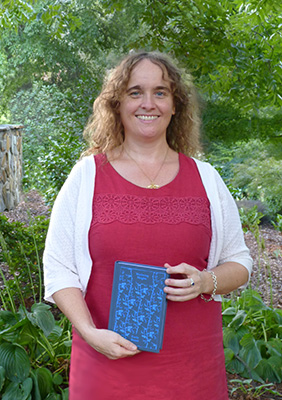Affiliation: University of North Carolina at Greensboro

Joanne Murphy is Associate Professor with the Department of Classical Studies, University of North Carolina at Greensboro. She holds her degrees from the University of Cincinnati (Ph.D.), and University College Dublin, and her fields of study are Greek archaeology, archaeological methods and theory, the archaeology of religion, and the archaeology of mortuary systems. She is Director of the Kea Archaeological Research Survey, and Co-director of the restudy of the Pylian tombs. Publications include Ritual in Archaic States (edited volume, University Press of Florida, 2016), and Death and Palaces: A Detailed Study of Pylian Tombs (in preparation).
In this paper I explore how Pylian elites used memory to communicate and legitimate their ideologies first in the tombs near the palace and later at the palace itself.
By discussing evidence from the tombs including their location and the types of objects buried with the dead, I argue that in the early periods of the growth of the settlement of Pylos the tombs acted as mnemonic devices for a nascent ideology that focused on individual family lines. The manipulations of the landscape with the construction on monumental tombs in close proximity to the palace combined with the reuse of the tombs for generations created a shift in people’s memory and their appreciation of time, their understanding of their past, and their projections to the future. I further argue that the objects buried with the dead, which were probably displayed in a procession from the settlement to the tomb, articulated the society’s emphasis and reliance on imported exotica and a warrior ideology. Through these artifacts elites expressed their participation in the Mycenaean cultural koine, their connection to large networks of trade and power, and their military and personal strength to defend these relationships.
During LH IIIIA as the palace grew in prominence, the economic and cultural importance of the tombs began to wane and the Pylians shifted not only their main economic strategies of power to the palace but also the less concrete, but equally effective, strategies based around the senses and memory. Thus, I show that memory and its manipulation was a key strategy in Pylian power dynamics from the Early Mycenaean period through the collapse of the palatial culture.
Short bibliography and/or website on lecture topic:
C. W. Blegen, M. Rawson, W. Taylour, and W. P. Donovan, The Palace of Nestor 3. Acropolis and Lower Town. Tholoi and Grave Circle. Chamber Tombs. Discoveries Outside the Citadel (1973).
J. Murphy, J. Davis, S. Stocker, and L. Schepartz, “Late Bronze Age Tombs at the Palace of Nestor, Pylos” in J. MURPHY (ed.), Variations on a Theme: Late Bronze Age Mortuary Practices in Greece (2021), pp. 26-44
The prominent position of the perfume industry at the Mycenaean palace of Pylos has long been known. Both the archaeological remains and textual evidence indicate that perfume was a prestigious commodity at Pylos that was manufactured under palatial control at the palace itself. The finished product was a restricted commodity that was distributed by the wanax, the highest ranked individual at the palace. The fragrance of the perfumed oil would have been prominent at the palace creating both a physical and a sensory connection between the palace, its power, its prestige, and its wealth and the smell. While the smell of the manufacture of perfume would have been available to all who lived in and around the palace or even visited it, the finished refined perfume was only available to a limited few. This paper, thus, connects some well- and long-known data about perfume production at Pylos and combines them with more recent works on sensory anthropology, neuroscience, and biology.
Short bibliography and/or website on lecture topic:
Classen, Constance 1993 Worlds of Sense: Exploring the Senses in History and across Cultures. Routledge, London.
Shelmerdine, Cynthia W. 1985 The Perfume Industry of Mycenaean Pylos, Göteborg.
Over the past few decades, archaeologists have assigned the ancestors significant roles in the supernatural orders of most ancient societies. They argue that ancestors, through their connection to the divine or supernatural, wielded a power that could transform society and grant exclusive rights over limited resources to those who could argue either for a familial connection to the ancestor or have access to the dead. These arguments are primarily derived from ethnographic research carried out on communal, formal burial areas that were used for long periods of time. Several scholars have argued that Mycenaean elites drew power from their ancestors and were reliant on that source of power for their continued success.
Based on a detailed examination of the dates of the tombs’ use, the wealth of the artifacts in them, and location of the tombs at Pylos, I argue that the metaphysical components and significance of the mortuary arena and ancestors at Pylos fluctuated and instead of having a constant static function the manipulation of the ancestors cycled in relation to the changing political economy at the palace.
The varied lengths of time during which individual tombs were in use, the different locations of the tombs at different periods in relation to the palace, the changing quantities and values of the objects deposited in the tombs during the burials, and the chronologically limited evidence for any non-funerary rituals at the tombs all indicate diachronic changes in the importance of ancestors among the elite groups at Pylos.
Short bibliography and/or website on lecture topic:
C.W. Blegen, M. Rawson, W. Taylour, and W. P. Donovan, The Palace of Nestor 3. Acropolis and Lower Town. Tholoi and Grave Circle. Chamber Tombs. Discoveries Outside the Citadel (1973).
J. Murphy, J. Davis, S. Stocker, and L. Schepartz, “Late Bronze Age Tombs at the Palace of Nestor, Pylos” in J. MURPHY (ed.), Variations on a Theme: Late Bronze Age Mortuary Practices in Greece (2021), pp. 26-44
See Joanne Murphy's work in the American Journal of Archaeology.